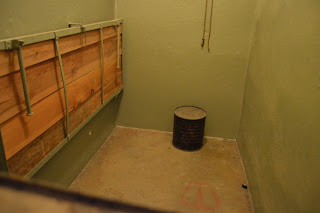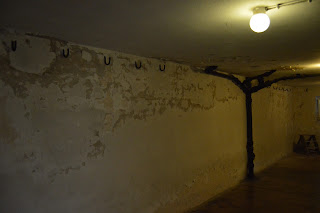WARNING DISTURBING CONTENT
I start by describing my day but then it's too gruesome to continue and I just explain the pictures. I'm still trying to digest this.
The other BYU students went to berlin this weekend but I'm going there on Tuesday to pick Tenery up from the airport! We're going to stay the night and go exploring on Wednesday. So yesterday I decided to go visit Buchenwald concentration camp.
I left early in the morning because I didn't want to be rushed and I wanted to have some free time in the afternoon. I looked at the train schedule in order to get to Weimar but I didn't look at the bus schedule before hand. Buchenwald is located on the outskirts of Weimar in a forest. I got to weimar just before 8 AM and the first bus left at 8:15 AM. However, this bus didn't go all the way to buchenwald since buchenwald doesn't open until 10 AM. It stopped at Ettersburg-siedlung which is about 6 kilometers away from the camp. Rather than wait for the next bus I just decided to walk through the forest. I wasn't worried about getting lost because A.) there were signs and B.) for some reason I get really good cell phone reception in the middle of forests. I decided to go with the signs because I didn't want to kill my phone battery. To get to Buchenwald I had to go straight through the whole forest. I decided to follow the signs and ended up making a wrong turn and ending up just outside of Ettersburg. I had veered too far to the right.
The real problem was that I came out in this long meadow and couldn't resist heading to the town. Right before I got to the town (like 50 yards away) I checked my phone and headed back into the forest.
The first thing that I saw when I got close to the camp was this old fence that was falling apart.
This was the outside edge of the camp and formed a second border hemming in the camp.
I made my way to the visitor's center to get an audio guide (it's free to visit the camp) and started to check out the camp. First, I walked down the "caracho path" that prisoners were forced to march down when they got off the train in order to get to the camp.
The buildings on the sides are barracks and offices for the SS guards that ran the camp.
While walking down the path I noticed this strange structure which it turns out was a bear enclosure for the SS zoo.
The camp fence is just to the left. It is said that the bears here were a form of psychological degradation because the bears were treated better than the prisoners.
I then made my way through the camp gate. The time on the clock is permanently set at 3:15 P.M. which is the time that the camp was liberated by U.S. forces on April 11, 1945. In the left wing of this building is the jail's prison, where inmates were put into solitary confinement. On the gate is written "Jedem das Seine" which means "everyone gets what he deserves." It is written so that it can be read from the inside.
Moving past the gate I came to the parade grounds where the prisoners were forced to stand for registration and inspections. To the right you can see the crematorium to the left of it the delousing station and storage depot and to the left is the prisoners canteen where cheap goods were for sale in order for the SS to skim more money from the prisoners.
canteen
depot and to the right connected to it is the delousing station. Prisoners were first brought to the delousing station, then led through an underground tunnel to the storage depot to get clothes and wooden shoes.
the crematorium
All of the barracks are gone now but they were in the big open area in front of me. You can see the outlines marked on the ground in stone.
I headed to the crematorium which was chilling to say the least.
Table where they performed autopsies and removed gold teeth.
Picture of dead bodies on the day of liberation and the courtyard where it occurred.
At the beginning of the camp they would fill these urns with ashes and mail them to the families COD.
Hooks in the basement that they used to strangle thousands of prisoners.
Ovens. Notice the flowers on the floor. People left flowers everywhere.
This device was used to execute soviet soldiers. They would have the soldiers stand up to be measured and an SS officer would be in the room behind the scale. After the prisoner turned around, the officer would open the wooden door and shoot the prisoners in the back of the head.
A remnant of the "goethe oak." It is said that Goethe sat under this oak with his lover long before this camp was here.
Delousing station and depot with foundation of a barracks in foreground.
A memorial plaque with the countries that prisoners came from listed. This plaque is kept at constant human body temperature.
After world war II this camp was turned into a soviet run prison camp. Each of these posts signifies a grave where 5-10 people are buried.




























No comments:
Post a Comment